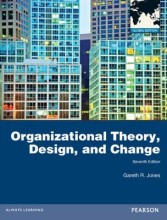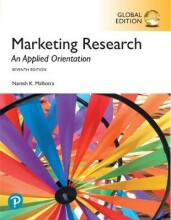Summary: Theories Of Marketing
- This + 400k other summaries
- A unique study and practice tool
- Never study anything twice again
- Get the grades you hope for
- 100% sure, 100% understanding
Read the summary and the most important questions on Theories of marketing
-
1 Topic 1
-
1.1 Reading questions
-
What do Slater & Narver meant by market orientation in their original article?
Market orientation is acultural mindset of acompany that reacts on the preferences of their customers and what the competition does. -
How did Slater & Narvers view on market orientation change in their newer article?
They added that market orientation could also be proactive. -
Does the network paradigm as proposed by Narver & Kotler (2012) make the market orientation idea obsolete?
Up to some degree, both ideas can coexist as the network paradigm mostly focuses on integrating all the companies of one consumption experience and not on the competition. -
Wil the customer experience concept make market orientation obsolete?
In many ways, customer experience management is better than the market orientation approach. Although, I can imagine that some companies might still make the choice to not switch as being proactive might come with taking more risks. -
How is the idea of customer experience management related to the new network paradigm that Achrol & Kotler (2011) propose - are they contradicting each other or supporting each other?
In the network paradigm, customer experience also plays an important role. In fact, one of the most important developments is the shift from exchange to experience. This means that they are supporting eachother. -
Does the 1998 paper by Slater & Nater imply that their original idea and definition of market orientation does not hold anymore?
Up to some degree, they say it is obsolete. They introduced a variant that is more proactive and therefore is not really market orientation. -
How will the ideas expressed about the network paradigm influence our marketing thinking and the marketing actions of companies?
It will shift marketing from a transaction-based approach to creating a customer experience. Making companies in a chain cooperate more to accomplish this. -
What is an example of the network paradigm?
HowNespresso creates acoffee experience by owning even themachine part and thedistribution . Instead of onlypushing coffee to thecustomers . For this, it works together with suppliers that produce machines and makes sure that the entire process is as sustainable as possible. -
Will the new market paradigm make the market orientation concept obsolete?
Some say it will and it does expand on the concept up to some degree. Although, it is a big step to closely work together with all parties. Therefore, some companies might stick to a market orientation. -
2 Topic 2: Consumer insights & motivations
-
2.1.1.1 Introduction
This is a preview. There are 1 more flashcards available for chapter 2.1.1.1
Show more cards here -
What is a consumer?
Consumers consume products that are generated by the economy.
- Higher grades + faster learning
- Never study anything twice
- 100% sure, 100% understanding
Topics related to Summary: Theories Of Marketing
-
Lecture slides and materials - A. Consumer insights & value - Consumer insights: What?
-
Lecture slides and materials - A. Consumer insights & value - Consumer insights: How?
-
Lecture slides and materials - B. Means-End Chains in Marketing - Insights & motivations
-
Lecture slides and materials - B. Means-End Chains in Marketing - Means-End Chains in marketing practice
-
Lecture slides and materials - B. Means-End Chains in Marketing - Recap session
-
Value equity & innovation - Overview Marketing strategy
-
Value equity & innovation - Value & Value equity
-
Value equity & innovation - Reading questions
-
Consumer behaviour - Vicarious learning
-
Consumer behaviour - Perusall articles - Application OC in online retail
-
Consumer behaviour - Perusall articles - Application VL in online purchasing
-
Brand & relationship equity - Brand architecture
-
Brand & relationship equity - Customer Equity
-
Brand & relationship equity - Reading questions
































